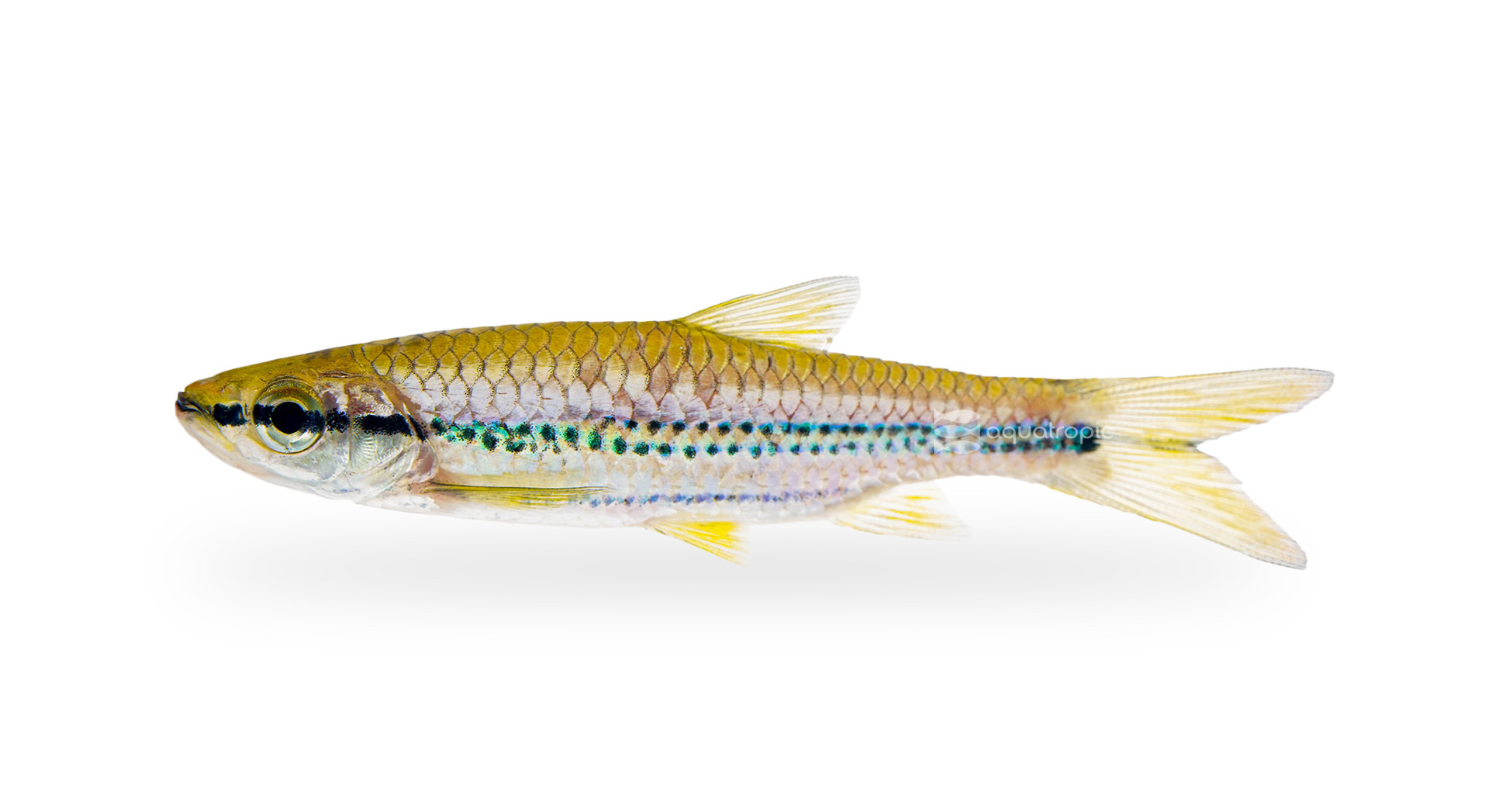Who is Apollo & Why Does He Have Sharks?

There are more than a few different fish that are imported and sold as “Apollo Sharks.” The real Apollo Shark, Luciosoma spilopleura, is a great aquarium fish and our focus here today. It is sometimes also called “Apollo Shark Minnow” and a few variations of those three words in different orders also happen. The other fish sold as Apollo Sharks are generally from the same genus. While all these fish appear and behave somewhat similarly, nearly all of the other members of this genus get much larger. Thus the real Apollo Shark is likely the best candidate for aquarium keeping for the vast majority of aquarists.
The Apollo Shark is an active, hardy fish that takes to captivity well. They are opportunistic carnivores in the wild and will eat small fish and invertebrates with relish. They can easily be taught to eat floating pellets. Some individuals may need to be fed some smaller feeder fish or live worms initially to get them started eating in captivity. They will also take ghost shrimp with relish. These Sharks live close to the surface of the water and as such, shouldn't be feed sinking pellets as they will generally not go down to the bottom to look for food. Don't feed them too much at once unless you are trying to get some food down past them to other tank mates. We feed them a small amount once a day here in house, and they do well on this schedule.
In regards to water quality, they like clean, well oxygenated water. This environment best mimics the streams they are collected from. As a result, your display should run oversized filters. Extra water movement will be appreciated by these fish and so it wouldn't hurt to add some powerheads to the display. Luciosoma spilopleura appreciates temperatures in the mid to high 70s, and a pH just under 7. While they only get to about 10” long or so, aquarists should plan for a 55 gallon tank at the bare minimum for the long term care of these fish with a 75 gallon or even a 125 gallon being better options at full size. The focus of the tank should be on length, and not depth as they will generally stay near the surface of the aquarium. Try to emphasize open swimming space when planning the upper reaches of your décor. They are also expert jumpers, and they will do so when startled, so a tight fitting lit is an important aspect of planning your display.
Socially, Apollo Sharks do best in groups of six or more fish; obviously, this would need to be a larger tank to hold this many fish at their full size. Keeping less fish than this is possible, but they can be aggressive if kept in smaller numbers or singly. Very small fish like neon tetras will get eaten by Apollo Sharks and fish that are plodding swimmers or slow eaters may struggle to get enough food if they are chosen as tank mates. Good choices for other fish to share and aquarium with Luciosoma spilopleura are fish like Barbs, Loaches, Knifefish, Acaras and Eartheaters.
Luciosoma spilopleura is only found in Borneo and Sumatra, and as of writing this, haven't been aquacultured yet; all of the specimens seen available for aquarium keepers are wild caught. This makes Apollo Sharks about the ultimate challenge for expert hobbyists, looking for an as-yet-unaccomplished feat. The fish's high activity level, hardiness and good looks make them appropriate for just about everyone else too! If you're looking for an amazing group of large, but not massive, fish for your display, then a small group of Apollo Sharks might be just what you are looking for. Head to your LFS and ask for six of them from Aquatropic today!